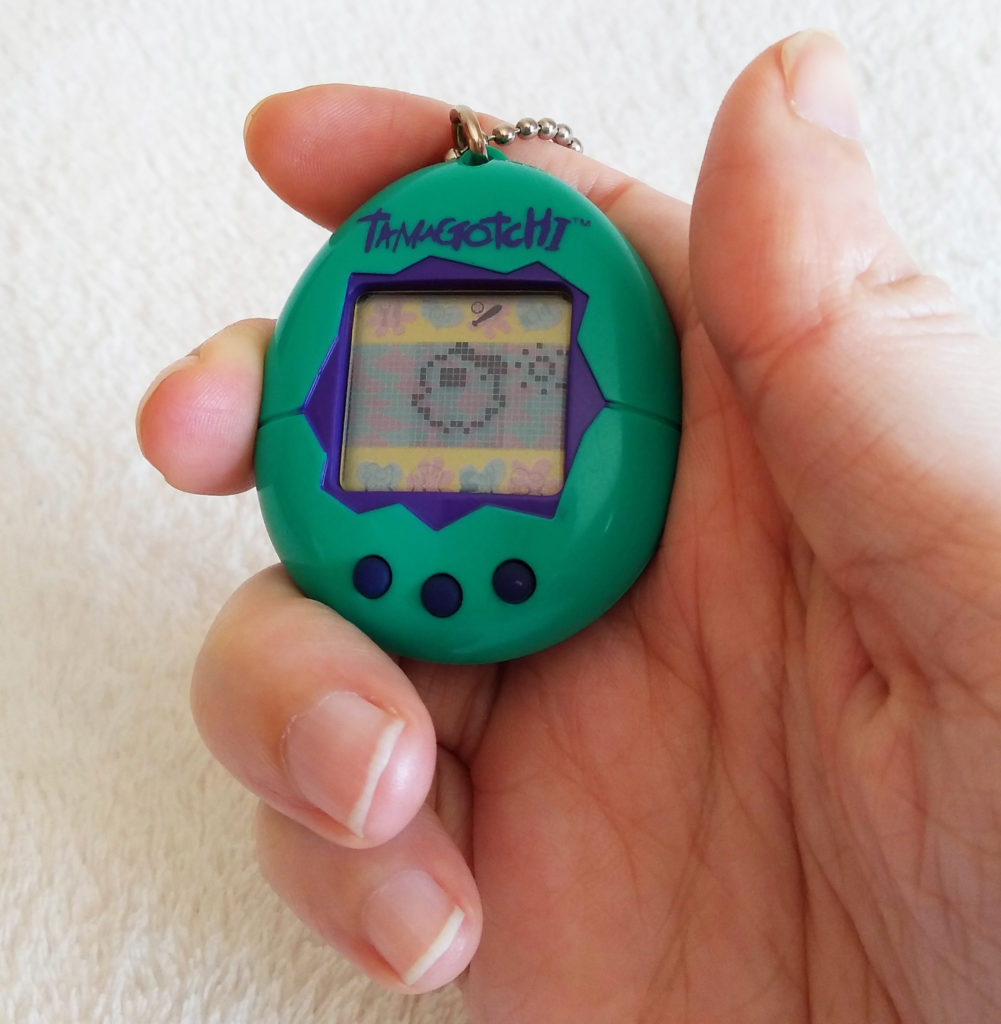
Release Date:
JPN: November 23, 1996
NA: 1 May, 1997
EU: 12 May, 1997
Developer:
Bandai
Tamagotchi is the first and most well known virtual pet. The name is a combination of the Japanese word for egg “Tamago” and the English word “watch”. Tamagotchi has the shape of an egg, with a small LCD screen inside and three buttons below it. As someone who loves small pixel things and pets, I had to have one.
Although Tamagotchi was originally pitched as a wristwatch (hence the ‘watch’-part in the name), due to its bulkiness and cost it ended up being a key chain instead. The idea is that you always have your pet with you. The small, egg shaped key chains come in various colours, making it a collectable.
Mine is green with purple details, with a ball chain, and is my childhood Tamagotchi. It’s a first gen Tamagotchi from 1997 (later generations run different programs) and is a European version. The 3 buttons are made of a softer, more rubber like material.
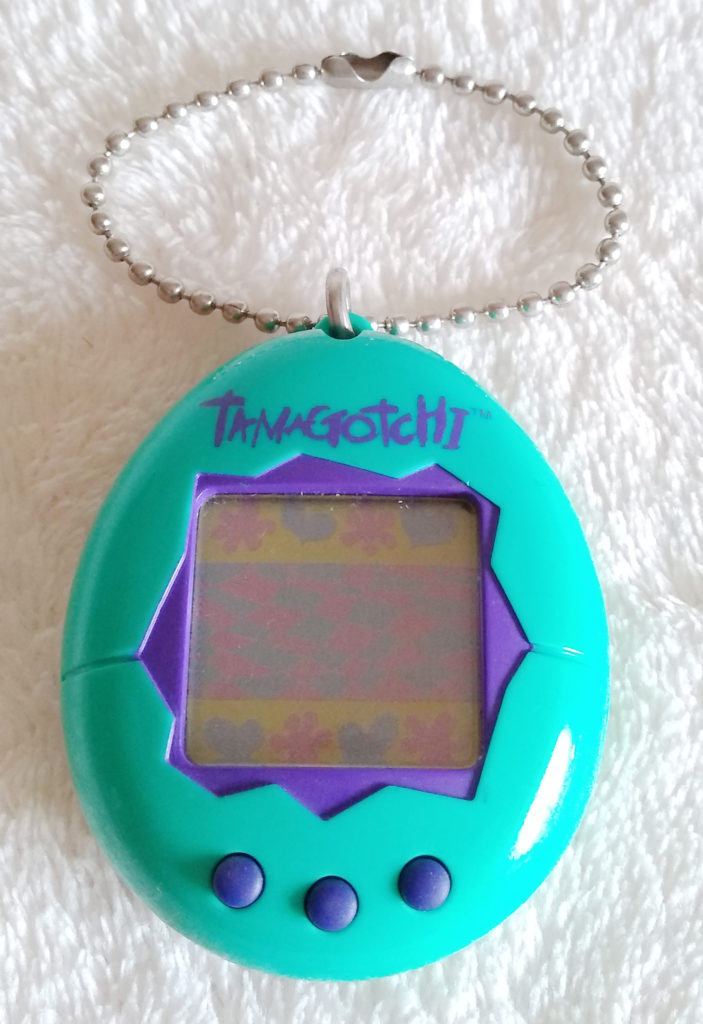
The screen is 32x16pixels with two rows of icons above and below it. It has a printed cardboard behind the screen, which has a blue and pink checkerboard background, with yellow rows that have pink splats and blue hearts.
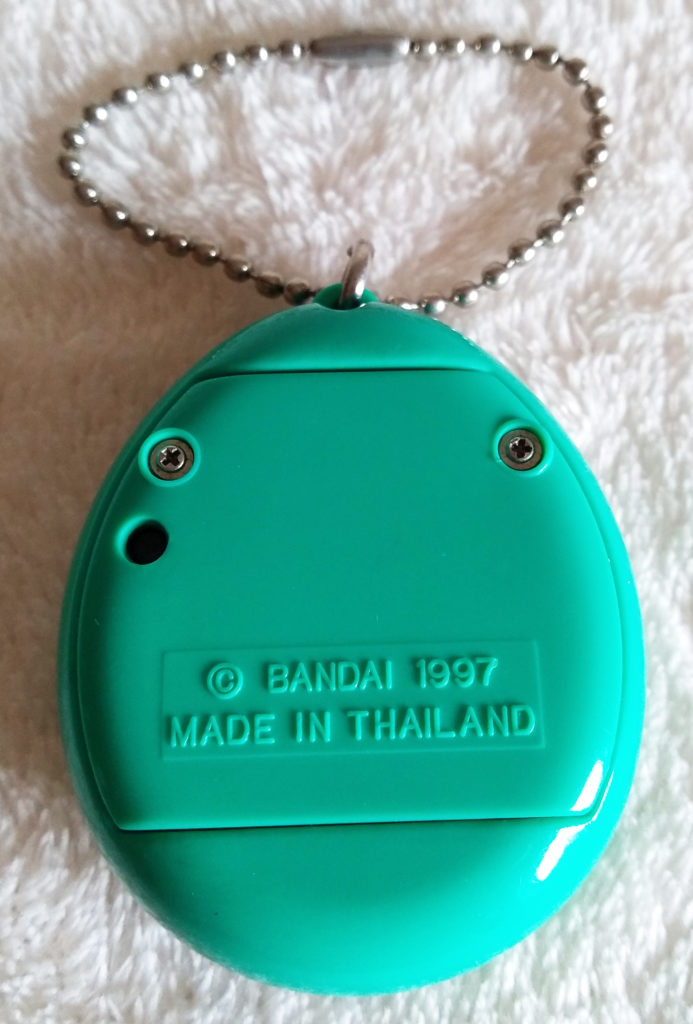
The back is plain, with 2 screws to open it up to place the batteries, and a reset button. It also has the branding here: © BANDAI 1997 MADE IN THAILAND
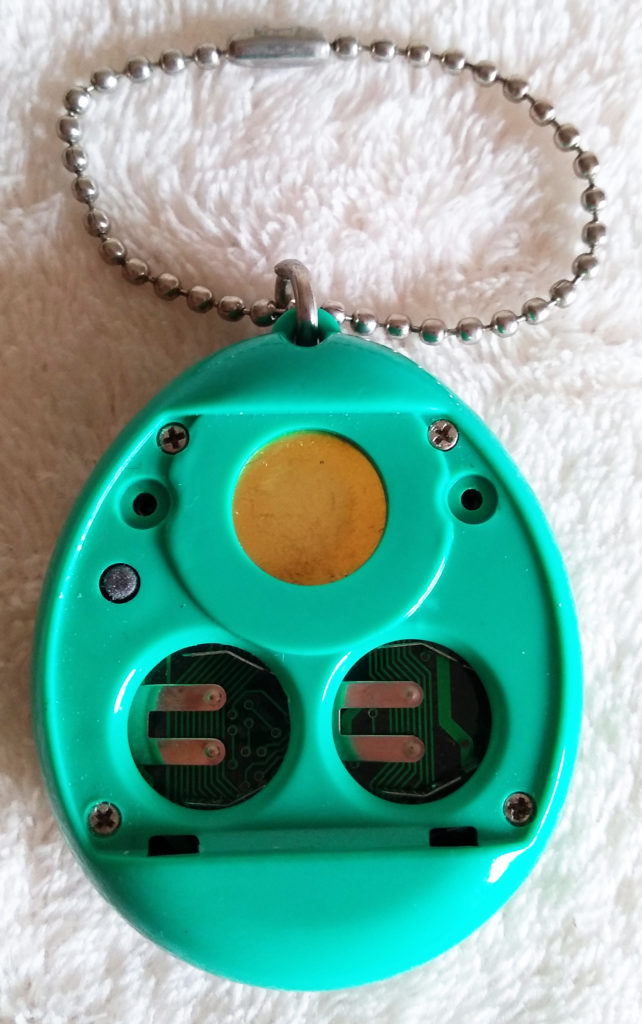
When opened a further 4 screws can be found to open it up should you need to. It fits 2 LR44 1.5V batteries.
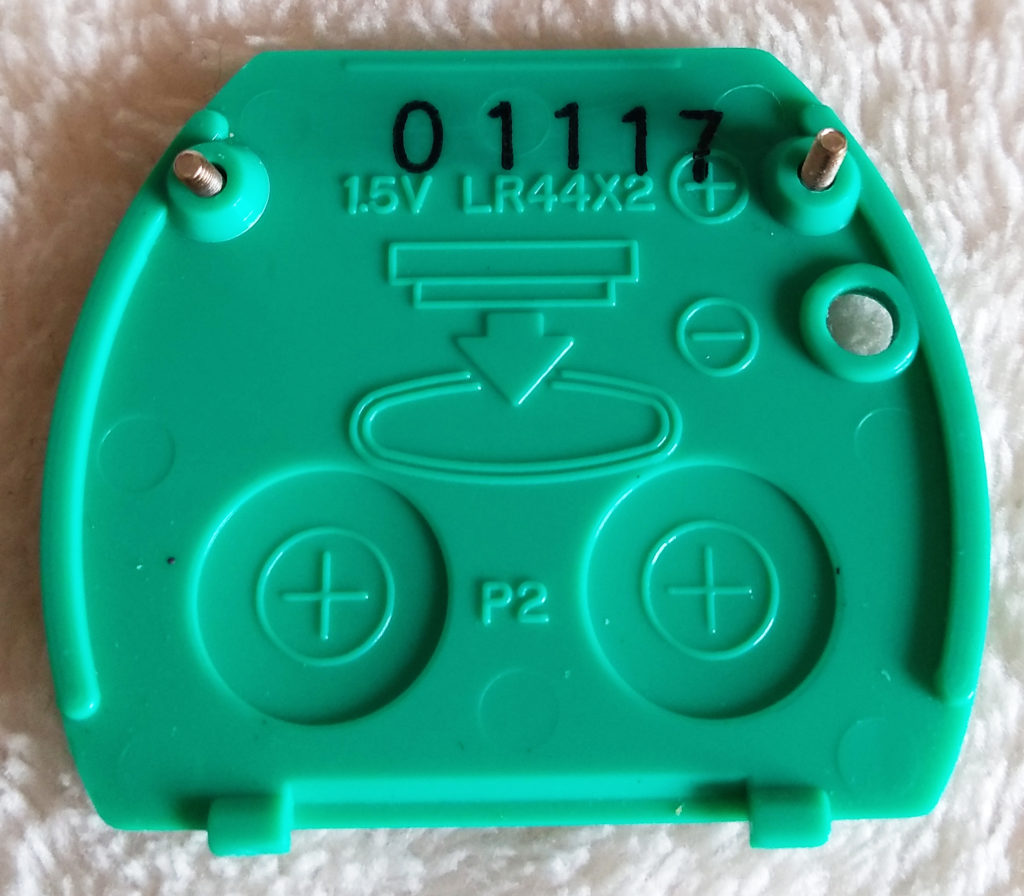
The back panel shows which batteries and how to place them.
Gameplay
The screen is not back lit, so light needs to catch the screen if you want to see something. I had to angle it slightly to get good pictures, so excuse my hands in the photo’s.
There are 7 options to choose from in the rows. The first button cycles through these options by highlighting the icons from left to right, top to bottom. The middle button confirms the selected icon, or displays the clock if none are highlighted. The right button cancels or clears any highlighted icon.
The first option is Feeding, displayed with a little knife and fork. When selected there are 2 options to choose from; meal or snack.
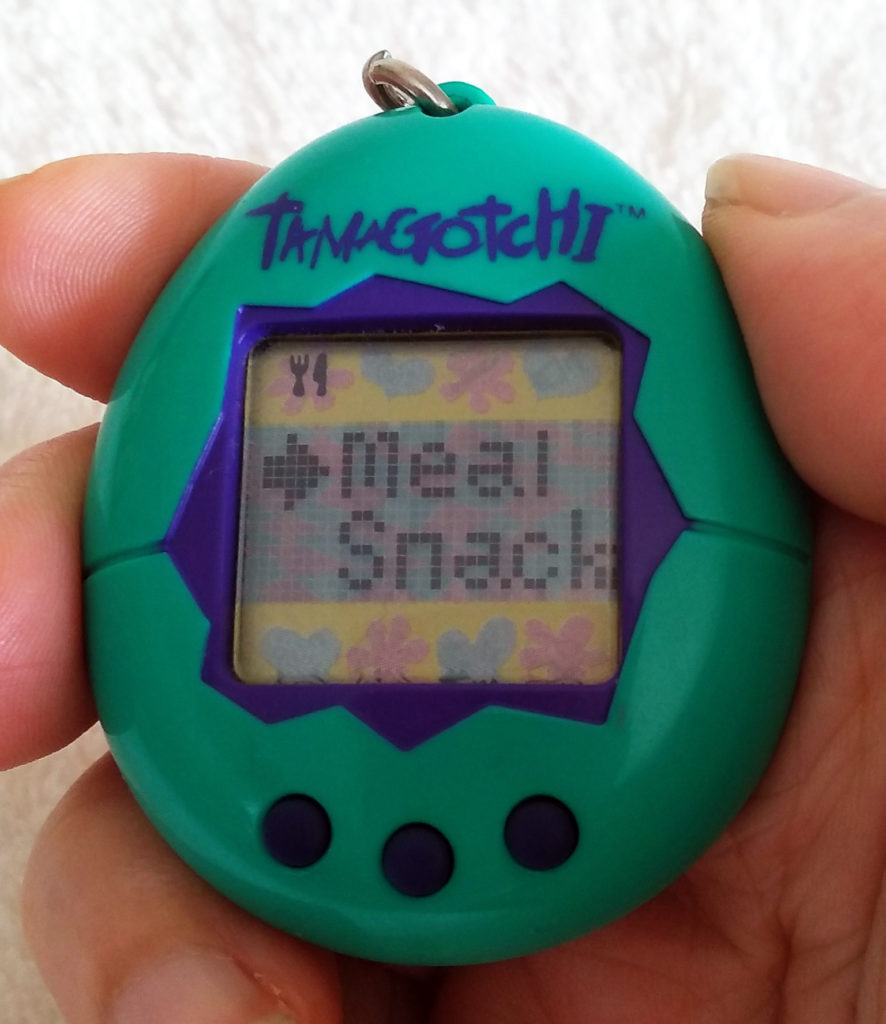
A Meal will fill up a Hungry Heart. A Snack will fill up a Happy Heart, and +2 to its weight. Feeding a Tamagotchi too many snacks within a short period of time will make it sick, and continuously doing so will kill it. Overfeeding it Snacks is the only way it can die during the baby stage.
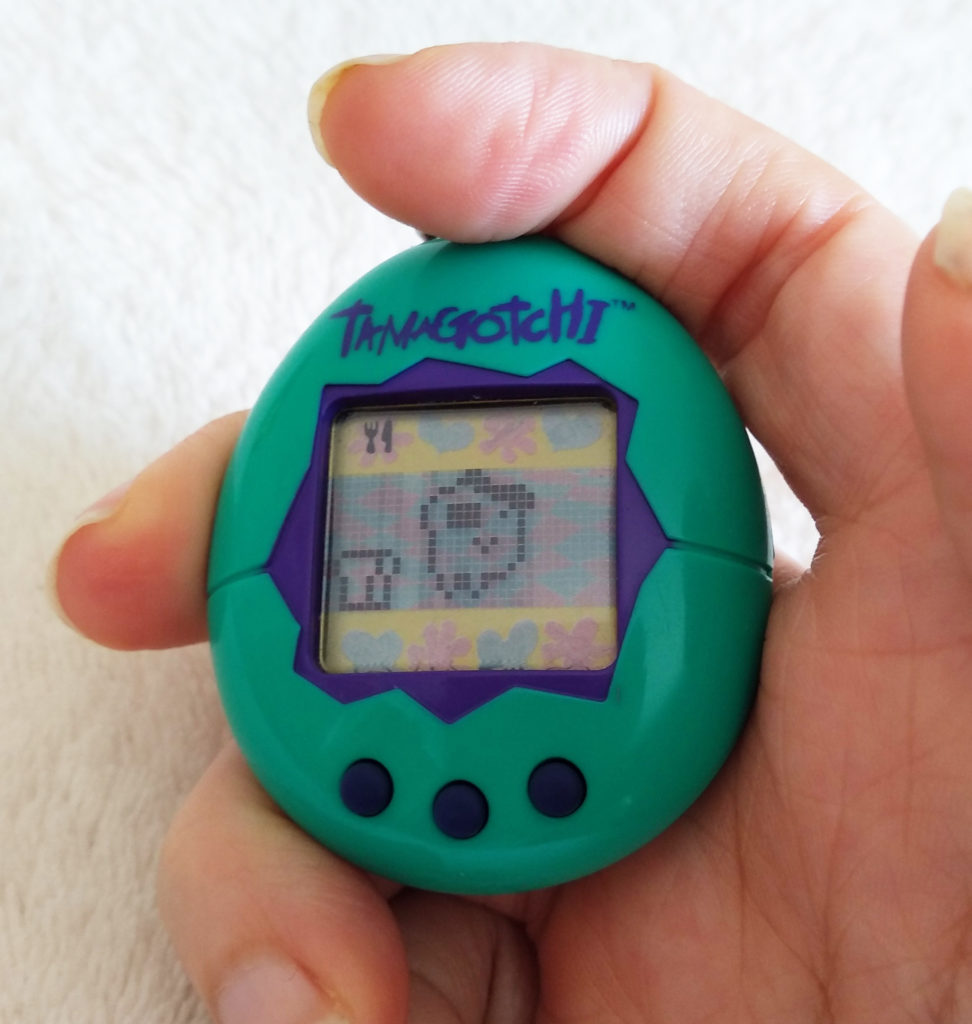
The Meal looks like a slice of bread, and the Snack looks like a candy. Both get eaten in 3 frames.
The second option is Light, displayed as a light bulb. Use this to turn the lights on and off. Once the Tamagotchi is asleep, depicted with a little Z moving above his head, you turn the light off. The screen is inverted then.
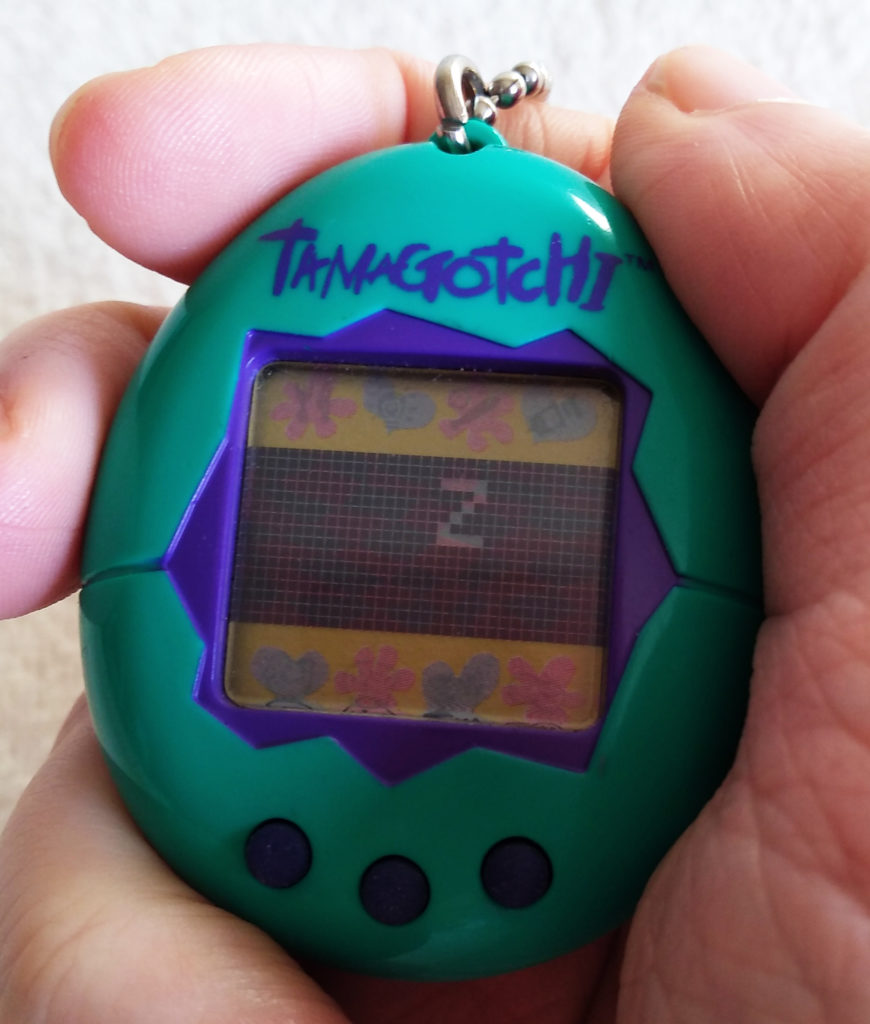
Third option is the Game, displayed as a baseball bat and ball. The game has 5 rounds, and you need to win 3 to win the game. Winning the game will fill 1 Happy Heart and -1 its weight. The game is “Left or Right?” The Tamagotchi will look left or right, and you choose either Left with the first button or Right with the second button. If the Tamagotchi lands on your chosen option, you won. If not you lose.
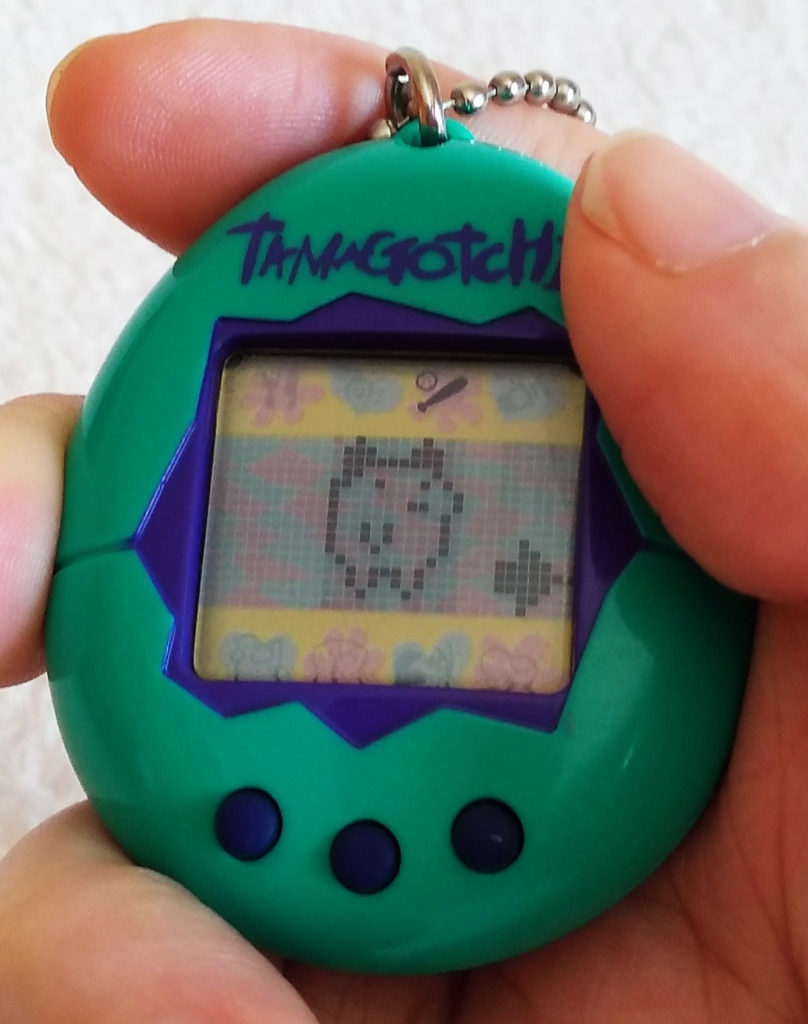
Fourth option is the Medicine, displayed as a syringe. If the Tamagotchi is ill, a skull will appear next to it. They will refuse to play or eat. Using Medicine will heal it. It can get ill prior evolution, before death, with old age, if poo has been left on the screen for too long, or if fed too many snacks.
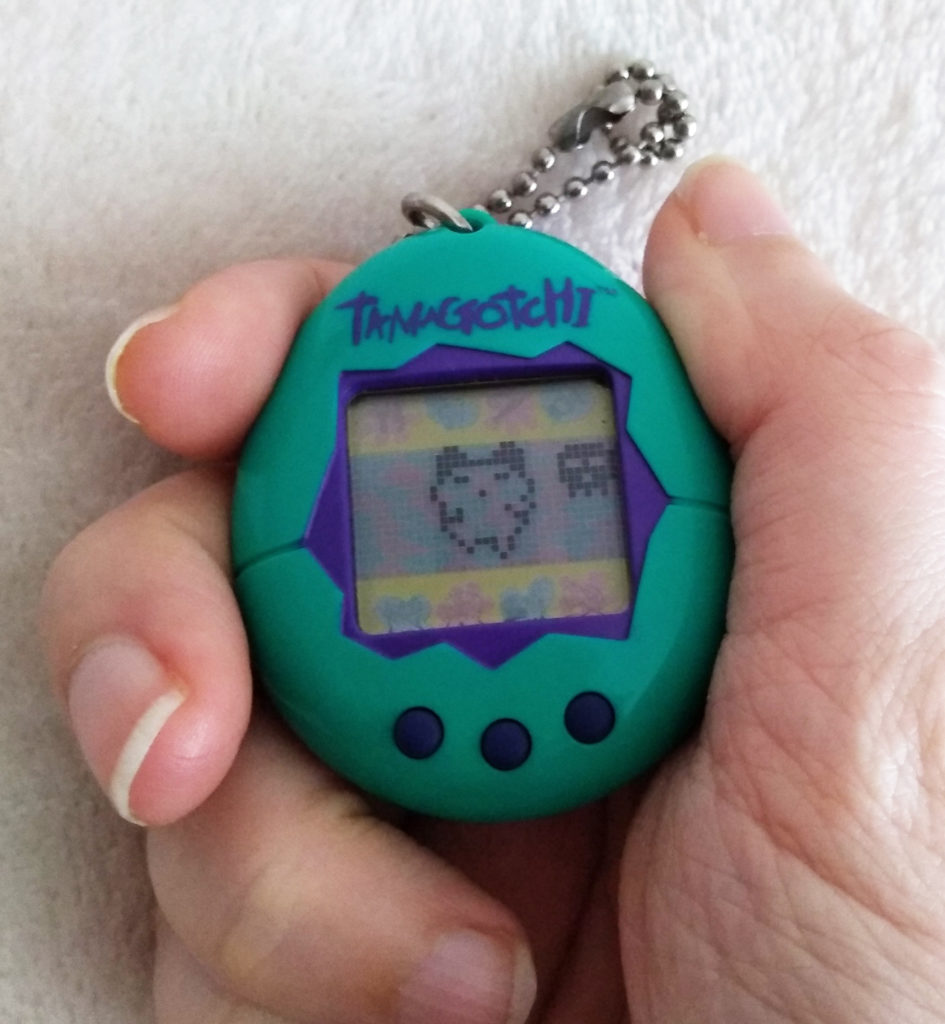
Fifth option is the Bathroom, depicted by a rubber ducky. Use this option if your Tamagotchi has pooped to clean it away with a large flush animation. Poop is displayed on the screen as a large turd.
If leaving poo on the screen for too long the Tamagotchi can get ill, and leaving multiple poo on the screen drastically increases this.
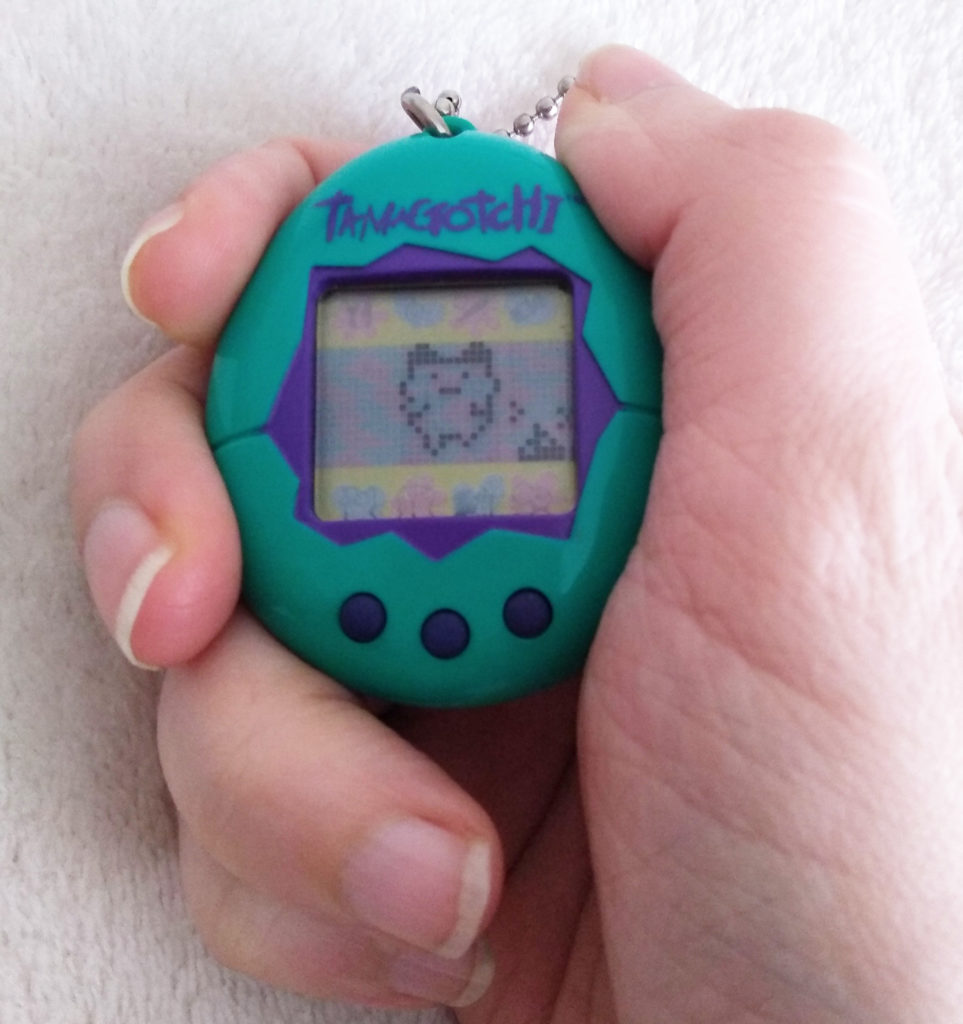
The baby poops twice, 15 and 45 minutes after hatching. The child will poop 5 minutes after its evolution, and then poops once every 3 hours.
The sixth option is the Meter, displayed by a scale. This shows the Tamagotchi Stats.
The first screen shows its age (each real-time day = a Tamagotchi year) and its weight in ounces.

The second screen shows Discipline, displayed in a meter.
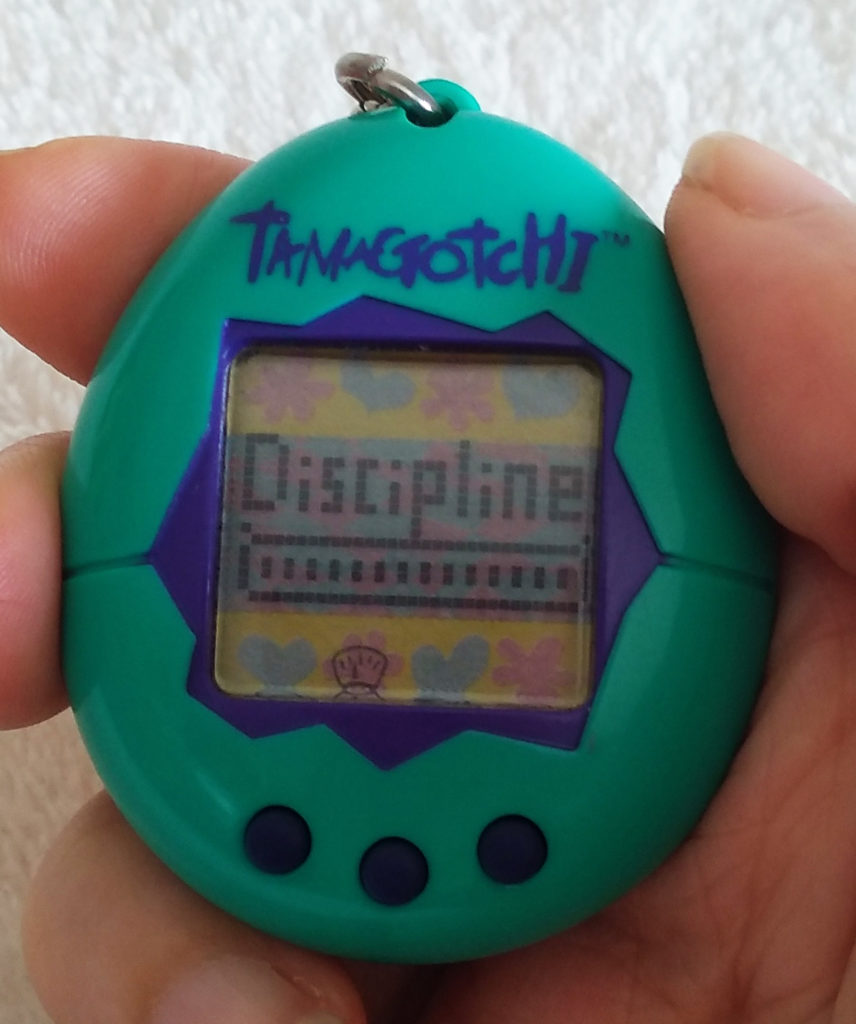
The third screen shows Hungry, displayed as 4 hearts.
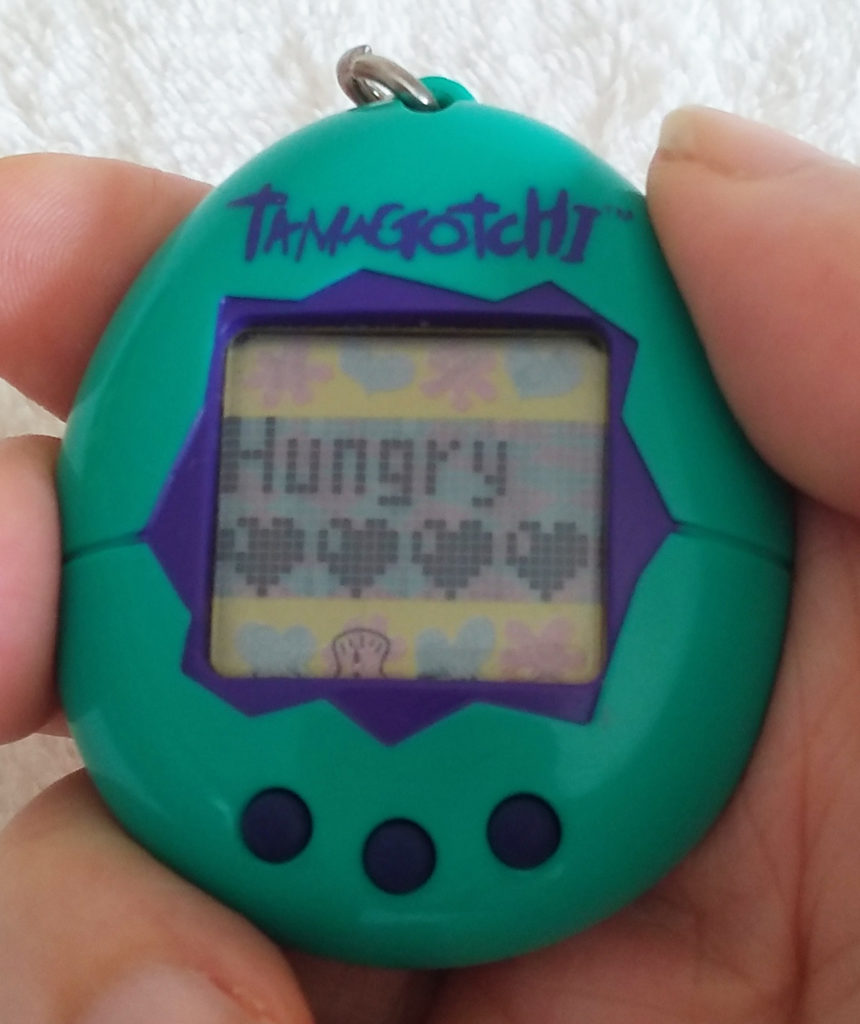
The fourth screen shows Happy, also displayed in hearts.
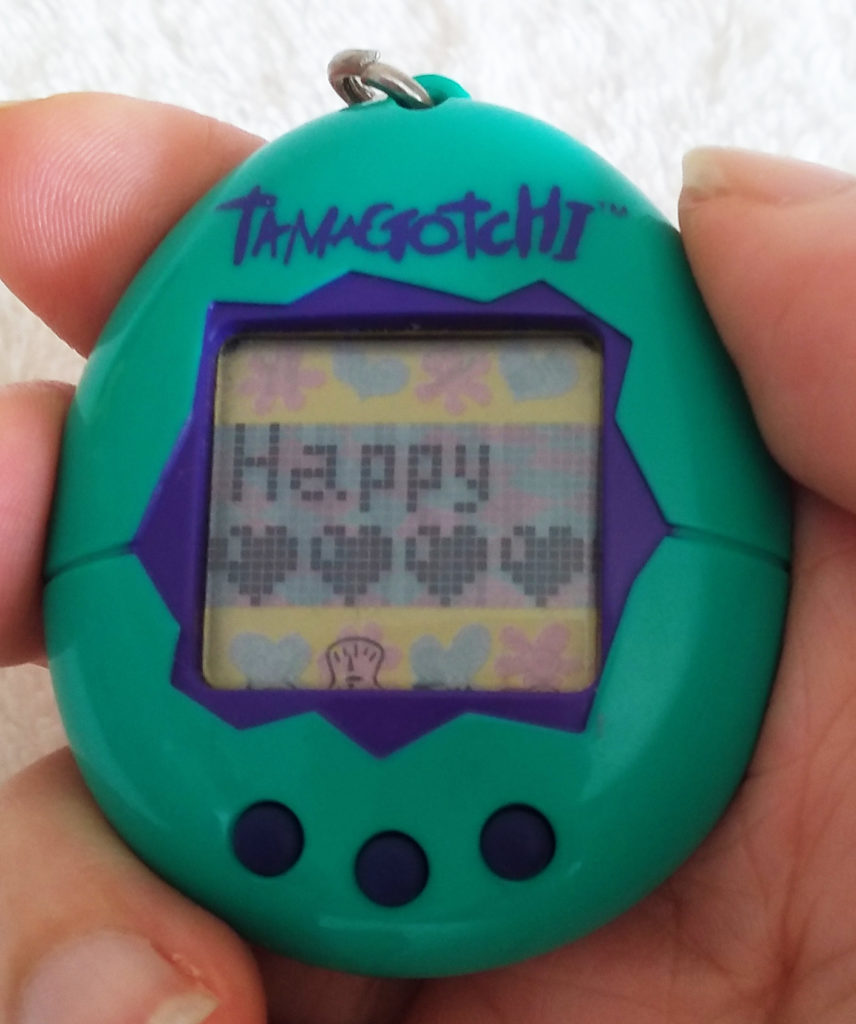
A solid heart is full and an empty heart is blank. The rate at which these decrease depends on the Tamagotchi and its age. The heart loss rate caps at 1 Hungry Heart every 7 minutes, and 1 Happy Heart every 9 minutes.
The seventh option is Discipline, displayed by a shouting pacman / Tamagotchi. Sometimes the Tamagotchi asks for Attention while it’s still in good health. Also, if this Attention is still lit while the Hearts have gone down, it’ll refuse to eat / play. When this happens use the Discipline to scold your Tamagotchi. If you scold it when it doesn’t need discipline it’ll lose a Happy Heart. Each successful Discipline will add +25% to the bar. The amount of discipline the Tamagotchi receives directly affects what they grow up into.
The last icon is Attention, displayed by a crying and laughing emoticon. This can not be selected but lights up when the Tamagotchi needs something. This can either mean it’s Hungry (all Hungry Hearts are empty), Sad (all Happy Hearts are empty) or it fell asleep and needs the Light turning off. It does not light up if it pooped or is ill. It can also light up but doesn’t need anything, in which case you need to Discipline it.
If you don’t take care of it within 15 minutes, it’ll turn off and be considered a “care mistake”.
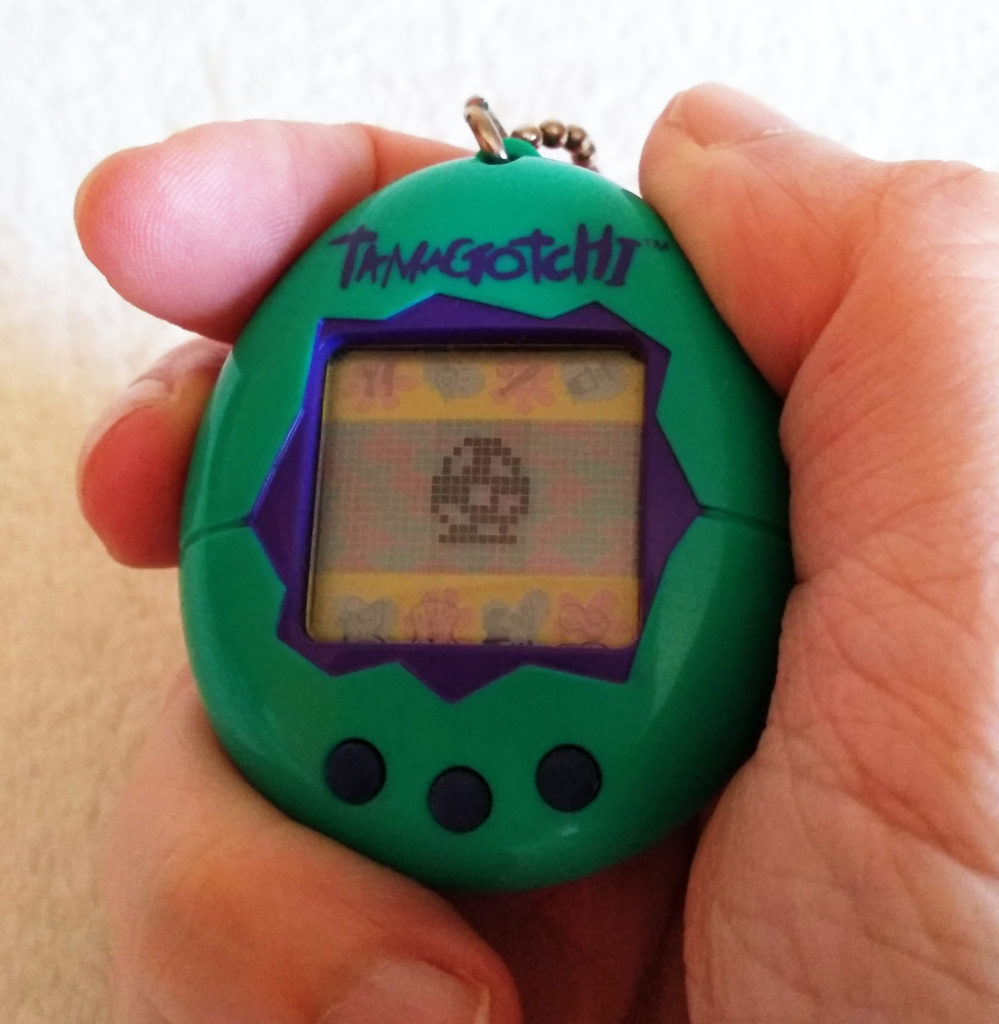
When starting Tamagotchi you start with an egg. After a couple of minutes it’ll hatch.
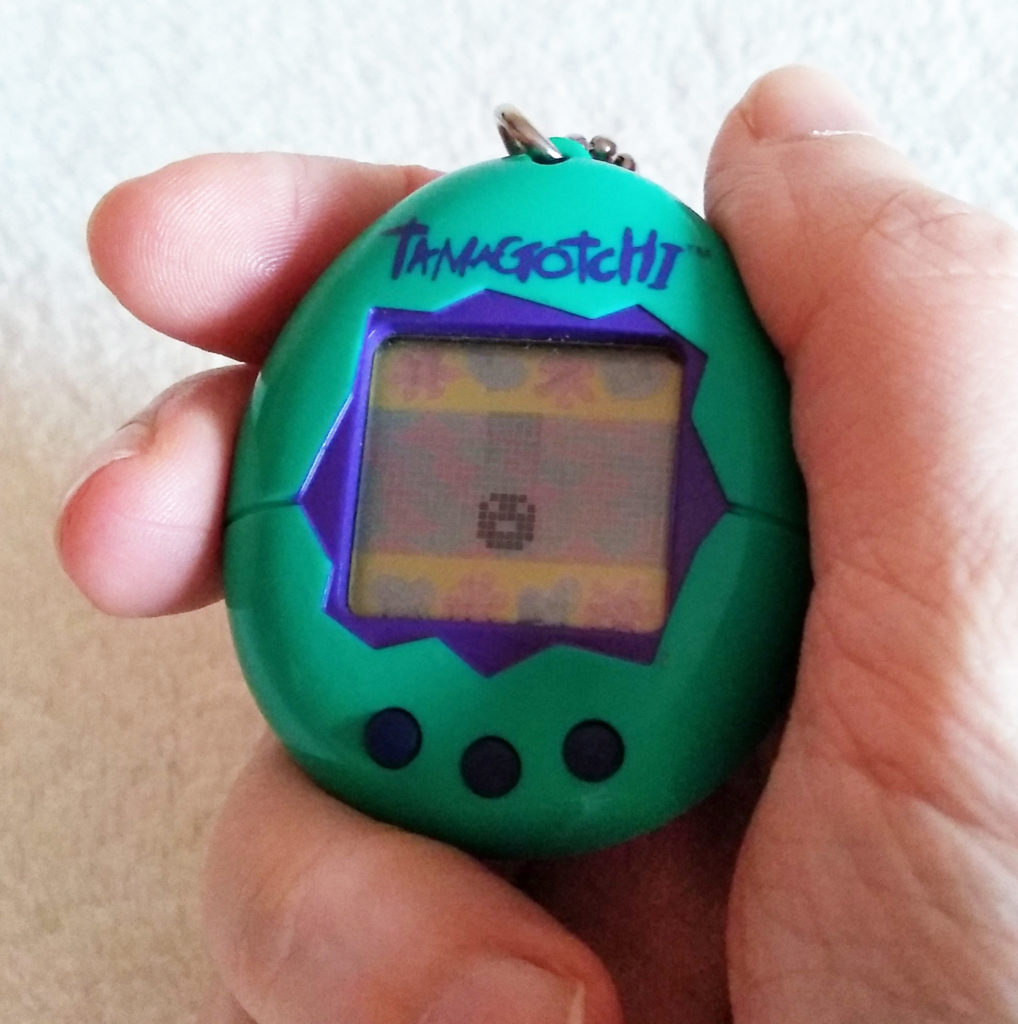
This form is called Babitchi. It’s basically a new born baby and needs almost constant care for about an hour. It’ll then evolve.
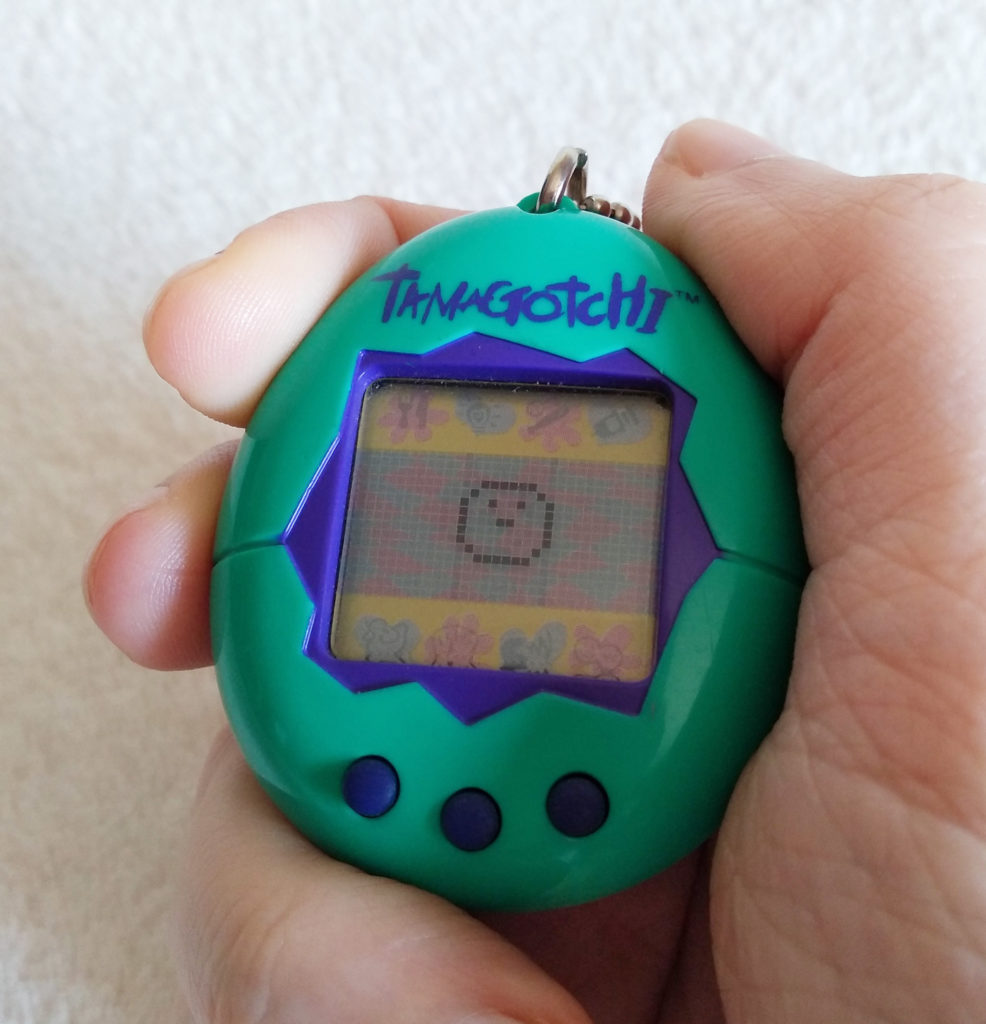
This form is called Marutchi. It’s a child at this point. Based on how you take care of it, it evolves into 1 of 2 Teens. This stage lasts 2 days.
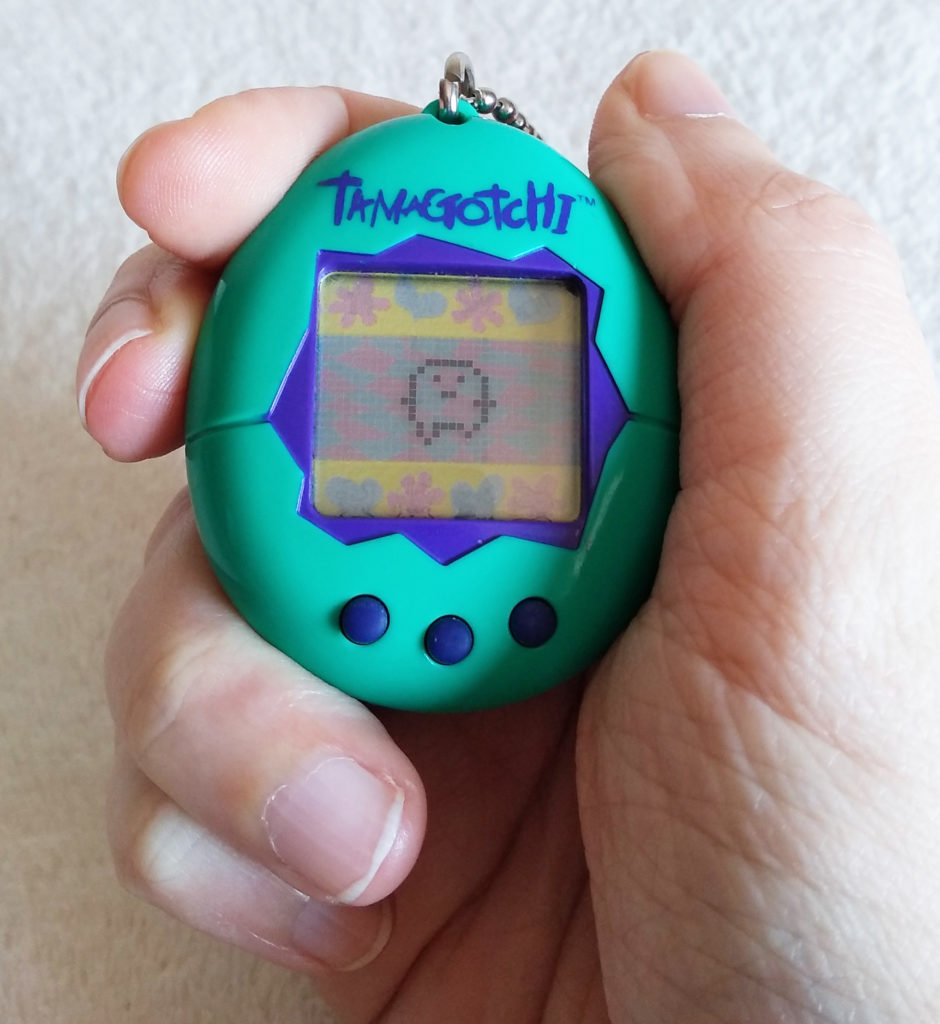
In the Teenager stage it’ll either be Tamatchi or Kuchi Tamatchi, depending on how you raised it. Tamatchi can evolve in all 6 Adults. Kuchi Tamatchi can only evolve in 3 Adults. This stage lasts 3 days.
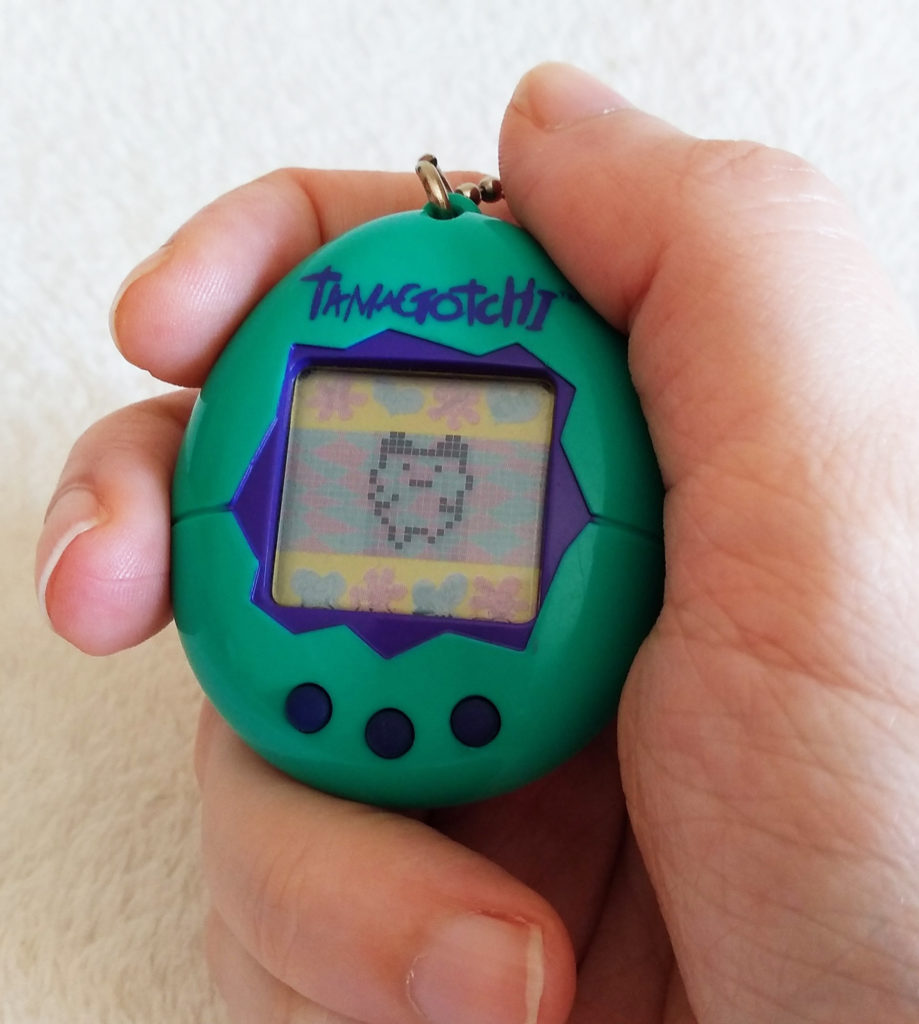
There are 6 different Adults; Mametchi, Ginjirotchi, Maskutchi, Kuchipatchi, Nyorotchi and Tarakotchi. Depending on how you raised it it’ll evolve in one of these. Only Maskutchi can evolve into an Elderly character, also known as the “Secret Character”. Otherwise they’ll be in this form till they die. Mine lasted 15 days in this stage before dying.
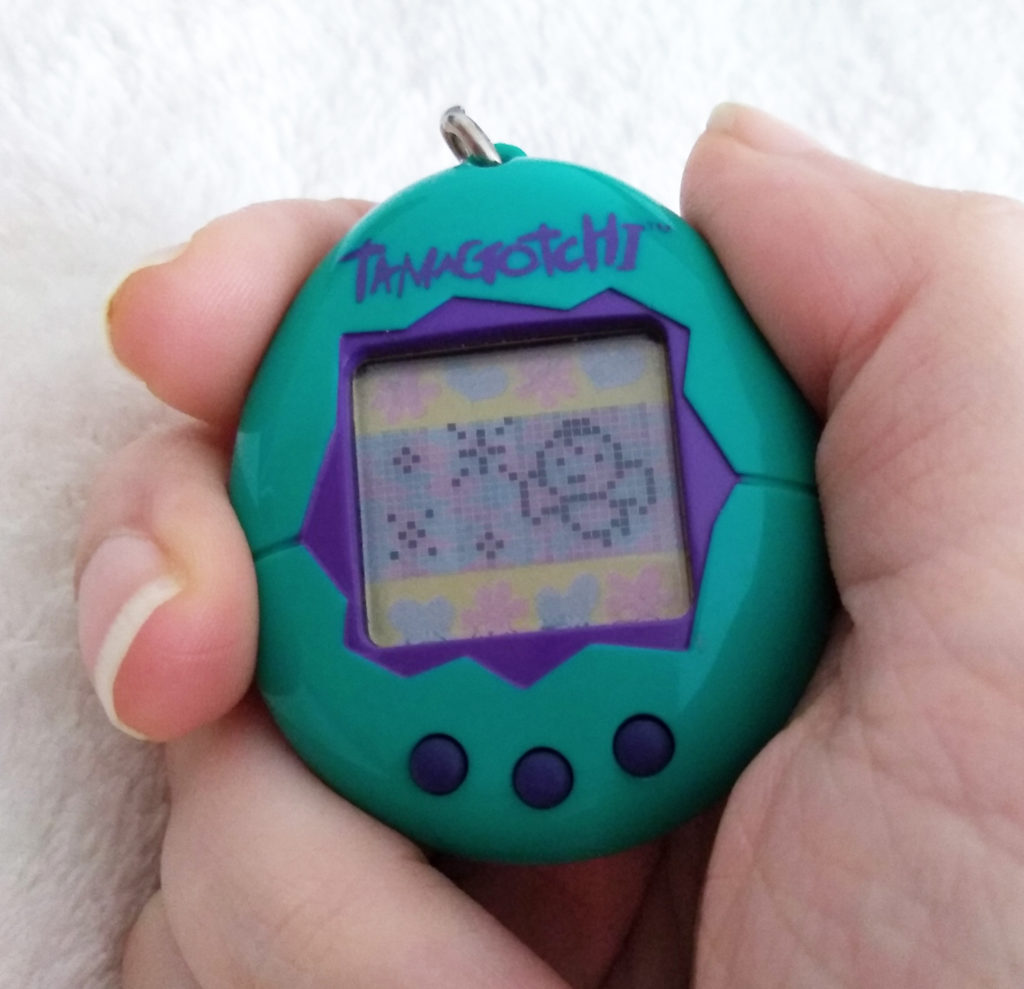
A Tamagotchi will eventually die due to neglect or old age. The oldest a Tamagotchi can get is 25 years old. My personal record is 22.
When it’s dying a heartbeat can be heard, which will eventually flat line. No input is taken.
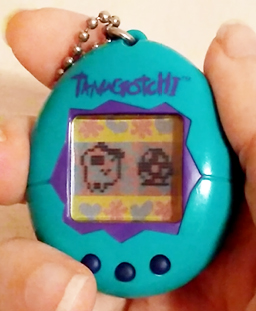
If you had taken good care of it and it’s an Adult, it’ll lay an egg before passing on (the egg doesn’t hatch and disappears after the death sequence). Child and Teen never lay an egg, and the Baby skips the death sequence all together and has the screen fade before showing the death screen.
Pressing both the left and right button at the same time will give a new Egg to hatch.
Development
The original concept was pitched by Akihiro Yokoi (横井昭裕) in 1995 at Bandai. He was inspired by a TV commercial of a boy who wanted to take his pet turtle with him on a trip. The initial pitch was for a mobile pet, the raising simulator came later. It was also suppose to be a wristwatch.
Aki Maita (真板亜紀) was a developer on the original Tamagotchi and solidified many of the Tamagotchi concepts that set the standard for future virtual pets.
Both Akihiro Yokoi and Aki Maita won an Ig Nobel Prize, crediting them as the “Father and Mother of Tamagotchi”.
Character Design was originally done by Yōko Kuroyanagi, but after she was fired, Kenji Watanabe took over. The international style and characters were developed by Bob Nenninger.
Localisation
- In the Japanese version, the eggs are white, whereas in the Western version, the eggs are black.
- In the Japanese version, the death screen has a tombstone and ghost, whereas in the Western version, it’s an angel amongst stars.
- The Elderly / Secret Character in the Japanese version is Oyajitchi, and looks like a balding person. In the Western version it’s Bill, and he is a stereotypical American man with a long nose. Bill is also known as Gaijintchi (外人っち), where “gaijin” means “foreigner” or “outsider”.
- In the Japanese version, the Meal looks like a bowl of rice, whereas in the Western version, it’s a slice of bread.
- In the Japanese verion, the weight is displayed in grams, whereas in the Western version it’s displayed as ounces.
Accessibility
- Visual
The Tamagotchi uses very few and simple sprites / animations. The icons on the sides can be too small and hard to see, but could be doable if going off memory. The screen is not back lit, so good lighting is needed to see the screen. Using the third Cancel button will always place you back with no options selected, should you play blindly and need to know where you are. - Fine-Motor
The Tamagotchi doesn’t require any fast paced input or precision action. There are 3 small buttons it uses, which are all closely placed together however they are easy to feel. If it needs attention you have about 15 minutes to deal with it. - Auditory
Although it only uses a few beeps, it’s enough to distinguish what is happening. Scrolling through an option or accepting as well as a cancel gives a confirmation beep. A successful jingle plays when playing the games and winning, as well as a fail jingle when losing. When it needs attention it produces alarming beeps. However, with most actions like feeding or cleaning, or when selecting an option it doesn’t want, there is no sound with the animation. It also doesn’t beep when it has pooped or is ill. There is also no sound to let you know it went to sleep, and it’s sleeping time various on the stage and type of Tamagotchi it is. If knowing the setup and keep track of its stats, it could potentially be played blindly by sound alone, although I imagine it’s tricky. - Cognitive
Your Tamagotchi can die.
Power up
When Tamagotchi’s became quite the rage I also of course wanted one! So I asked Sinterklaas (the Dutch Santa) for one. I was actually very disappointed when I got this one instead. It wasn’t a real Tamagotchi that my friends had! We weren’t the richest family, and Tamagotchi are quite expensive, so I understand now why I got a knock off though. But I saved my pocket and birthday money and eventually bought this green/purple one.
I absolutely love these little things. I like small things, pixel games, and animals, so what’s not to like here for me?
And these things were hard to take care of as a child back then. They got banned out of school for being “distracting”. And my parents weren’t going to look after it. So I had to hope it would be ok after 4 to 6 hours without care, and sneakily and quickly play it during lunch and break times. I’d always find a poop covered screen with a sick Tamagotchi. I always ended up with the weird duck looking ones that never got that old.
When I replayed it recently again for this blog, this baby got 24 hour care. I finally got Mametchi, my favourite adult. I also hit a personal record of 22 years old!

I find these so lovely now. I just love small things and pixel games. They are easy to get into, have simple mechanics and not a lot of button presses, and I am fascinated by early video games.
I hope to get a few more virtual pets. I’m not interested in getting the same ones in different shells however. I would low-key like to get a Japanese one of these to compare the differences in person though. Until then I’ll keep playing my childhood pets, and will update this blog when I get some of the other Tamagotchi in this one.
The goal is to one day get a 25 year old Tamagotchi, as well as finally seeing Bill!
Recommendation
If you like virtual pets or small simple pixel games, you’ll like this. It is -the- and first Tamagotchi after all. The many “forms” it can have means there’s some replayability here too. They can be hard to upkeep though.
If you like deep complex video games, you probably quickly get bored with this one. And of course, they can be pricey now which could also turn you off of these.
Do you have an original Tamagotchi? Are you thinking of running this one (again)? Is there any information you’re missing? Let me know in the comments below!